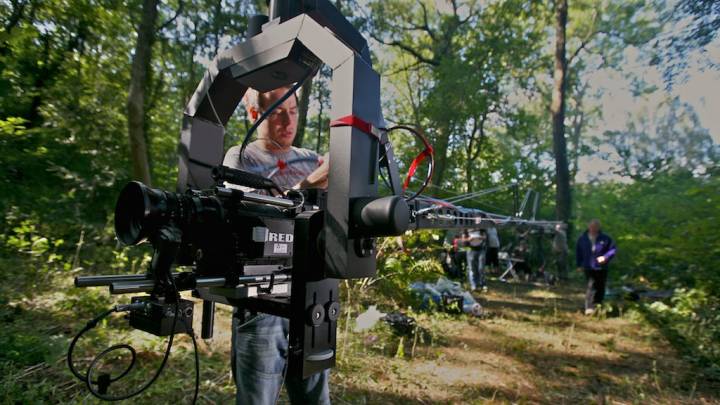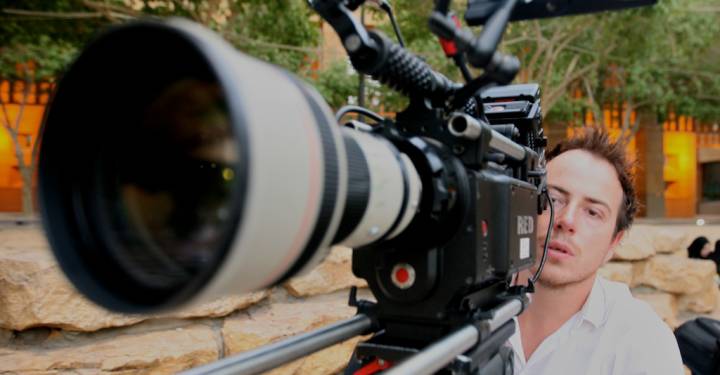- Exclusive interview with MARK WHATMORE, managing director of YohoMedia
- 11/11/2010
-

- Share
- Tweet
-
Your company Yoho Media was one of the first in the UK to embrace the Red Camera. What were the Red’s features that convinced you to take the plunge back then and invest in it, and what adjustments did you have to make in your working methods to accommodate this new technology.
I’ve always loved creating powerful imagery and that’s what lead me into an embrace with the Red camera. I was quite underwhelmed by most of the HD formats available at the time, but when the Red camera burst onto the scene it presented a very exciting opportunity to use digital acquisition to create superb, cinematic imagery.
There has been a lot of heated debate and discussion about Red cameras. There’s no doubt that there are cheaper, smaller, lighter and more robust cameras on offer, but very few that can match the image quality. Having worked with the camera for two years now, and seen it develop over time, I’m more excited than ever.
Stepping into the world of tapeless, digital production has been an interesting learning curve. We had worked a lot with 16mm film and Red is very much a cinematic tool, so a lot of the working practices follow on from film. But there’s also a lot that’s new to the digital workflow. The camera’s ability to capture RAW data offers tremendous potential but has to be carefully handled. We’ve had to learn a new approach to exposure to get the most out of the sensor, pushing its capabilities and guarding against its limitations.
The digital workflow has also opened up some great opportunities. I love the fact that we can make top quality films with little more than a camera and a laptop, and can start editing as we shoot, anywhere in the world.
As well as the UK, much of the work that you do is filmed in Europe, Africa and the Middle East. What has been your experience of traveling with the Red camera, from country to country and to remote locations?
We’ve taken our cameras to some fantastic places including Egypt, Saudi Arabia, the US, Ethiopia and Sudan. When you’re in spectacular locations, whether it’s the Nile Valley or the hills of Wales, you want to be sure your camera can do them justice.
The Red is fairly heavy, but as it’s a modular system it’s possible to build-up the camera so that it’s easy to use in the field, to work with one or two person crews.
It also has the benefit of a lot of dual systems – in terms of monitoring and data storage – so if one options fails you’ve always got another up your sleeve.
At YohoMedia you have your own in-house editing facilities. What are the main post-production issues which must be considered when editing images shot using The Redcam?
In the early days of Red there were a lot of problems with post-production and workflow, but as the cameras have become more common these issues have been addressed. It’s now easy enough to edit and grade the footage using any system, and Avid can now read the source files directly.
The best thing about working with Red in post is that there’s so much to play with; if you don’t like the way it looks you’ve got tremendous scope to make adjustments, either in the grading or the framing. Sitting down to edit with Red footage you’re in a much more open environment and can really mould and craft the footage to fit the needs of the film.
The other big issues for Red in post is data storage. In a typical day of shooting we’ll acquire up to 200 Gb of data and this can soon clog up your drive storage and, if things aren’t properly backed up, it can present risk. The solution that we’ve gone for is LTO tape. Each tape holds 800 Gb of uncompressed data and we use these to backup all out rushes, both during production and as an archive.
Red cameras are being used more and more in Holywood to shoot entire feature films but have yet to be embraced by Natural History filmmakers in the UK; why do you think that is?
The cameras are being used for all sorts of projects. Ours cameras have shot music videos, commercials, documentaries, short dramas, corporate films and video art installations. Generally speaking they are used more for projects that might have been shot on film in the past, where there’s a real desire to create contemporary, high-quality imagery.
The broadcast world has been slower to embrace the Red, but there are some early adopters who are making great use of the cameras. In the world of Natural History the beautiful Natural World ‘The Wild Places of Essex’ is a great example – beautiful and cinematic.
Do you think the future is Red?
I’m not a fortune teller, but my guess is that the future will be three dimensional (for which Red is well suited).
Red is only a few years old and has caused huge waves in the world of camera technology. The Red One is just a toe in the water and there’s a lot more to come. By the end of the year we’ll see the release of the Epic, the second-generation of Red cameras, which will be smaller, lighter and more modular, offering 5K capture at 250 fps and some interesting high dynamic range capabilities. We have one on order and can’t wait to get our hands on it.
The Red revolution is just part of a new wave of digital film-making which is developing at an astonishing rate. It’s overturning many of our assumptions about film-making and the real big changes may still be over the horizon. As this all snowballs I’m sure we’ll see some incredible developments that will open up film and TV in all sort of unforeseen ways. Technological developments, whether it’s big resolution or small cameras, are really just the background to a new generation of inventive and creative film-making. Canon’s 5D Mk II is perhaps a more revolutionary tool, even than the Red, as it breaks down barriers – financial, technical and even physical – that have constricted the process in the past. All over the world we see people grabbing these new tools and using them in new and exciting ways, often beyond the imagination of the inventors. Long may it continue.



